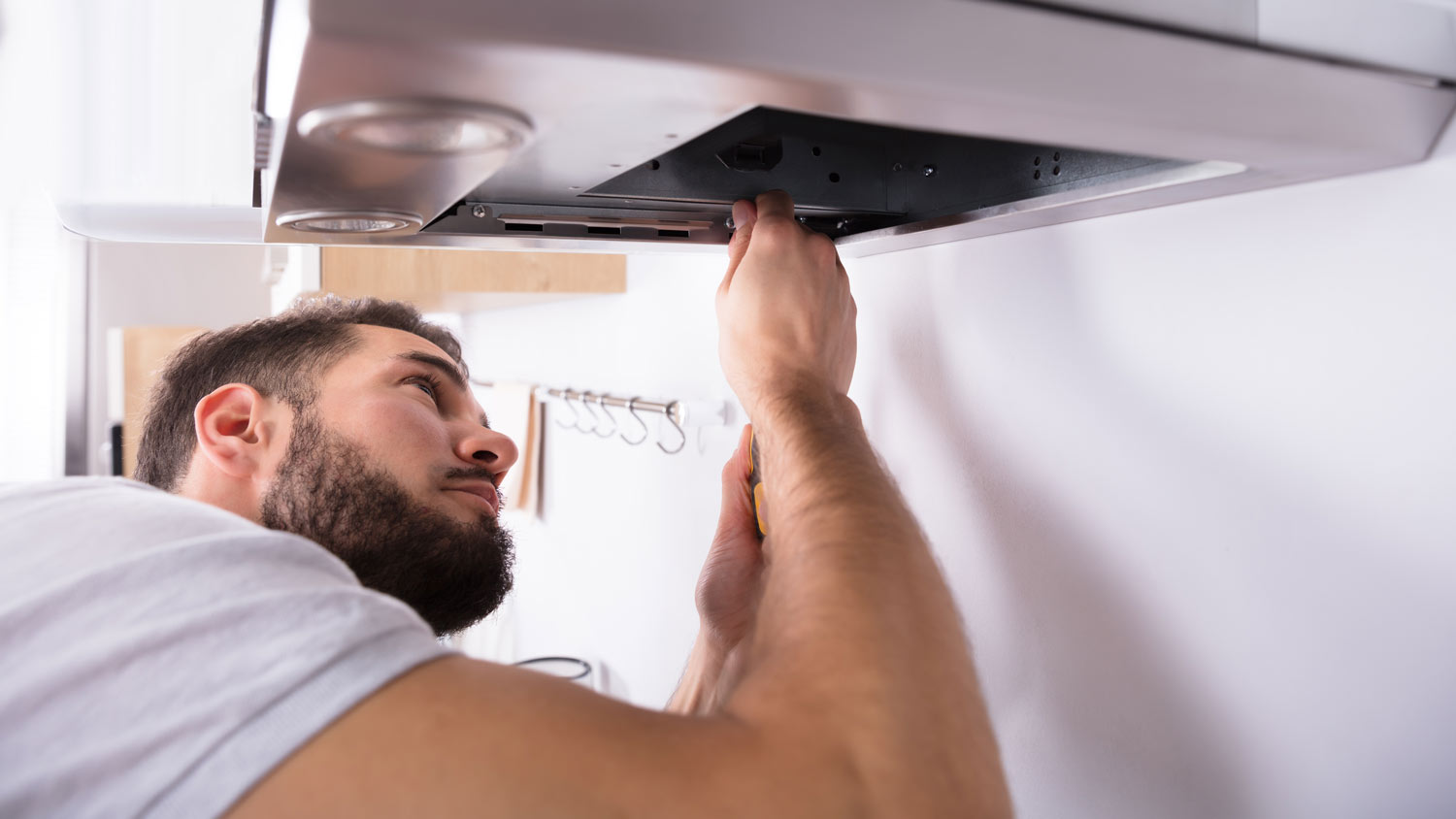
If your refrigerator has been damaged, refrigerator door dent repair cost will vary based on the imperfection's size, depth, and location. Use our guide to estimate how much you'll spend on refrigerator dent repair.
Keep the cold out of your kitchen


Installing a backdraft damper can stop cold air from leaking out of your range hood vent.
A backdraft damper helps exhaust escape your home and prevents outdoor air from getting inside.
If you already have a damper, try cleaning or replacing it to prevent drafts from entering your home.
Leaks in your ductwork can also lead to a cold draft from your stove vent.
A cool breeze feels amazing on a scorching summer day, but it’s not quite as welcome when it’s blowing out of your kitchen’s range hood in the middle of winter. If that happens, it means there’s an issue with your backdraft damper or ductwork. Fortunately, both of these problems are easily fixable, so you shouldn’t have to put up with a cold draft from your stove vent for too long.
A backdraft damper is a device that goes inside your ductwork and helps regulate ventilation in your kitchen. When you’re using your range hood, the damper’s flaps open to let smoke, steam, and fumes flow out of your house. When you turn the range hood off, the flaps close to prevent outside air, debris, and small animals from entering your home.
Sometimes, range hoods come with a backdraft damper, but that’s not always the case. If you don’t have one (or aren’t sure if you do), your best bet is to call someone who installs range hoods. They can check if you have a damper and explain whether or not you need one. If so, they can also handle the installation.
Even if you have a backdraft damper, there are a few situations when you might notice cold air coming from your stove vent. For example, if there’s grease or gunk covering the damper, it might not be able to close properly—and, as a result, it could let outside air into your home. This can also happen if the damper’s flaps are bent or damaged.
If you installed your range hood (and damper) recently, there could be a loose screw interfering with the damper’s operation. Alternatively, you might’ve put the damper in backward, which could explain the cold air blowing into your kitchen.
First, you’ll want to locate and inspect the damper. Here’s how to do that:
Put on protective gloves and safety goggles.
Turn off the power supply to the range hood.
Check your range hood’s user manual to locate the damper. Depending on the type and model of your range hood, this may involve unscrewing or detaching certain parts.
Inspect the damper.
Check the direction of the damper. The flap should open in the direction of the airflow.
If the damper is dirty or caked with grease, remove it from the ductwork and clean it. (This is a good time to clean the range hood, too.)
If you find any loose screws, tighten them.
For more serious damage (like bent or missing flaps), you should replace the damper. You can buy one online or at a home improvement store, then install it by following the manufacturer’s instructions. Otherwise, you can contact a pro who fixes range hoods to do it for you.
If your damper is in good shape, the cold air may not be coming from outside your home. Instead, it could be entering your range hood through leaky ductwork.
You can inspect the ductwork near your range hood and in your attic to look for leaks in your ductwork. If you find any, you can patch them up with foil tape—a duct sealing method that’s highly resistant to heat and grease.
Keep in mind: There may be parts of your ductwork that you can’t access. If so, you’ll need to hire a local HVAC technician to work on your ducts.

If you’re comfortable with basic appliance repairs, you can peek into your range hood and look for problems with your damper or ductwork. Based on what you find, you can try one (or more) of these DIY fixes to stop cold air from leaking into your kitchen.
However, if you aren’t much of a DIYer or can’t seem to pinpoint the problem, you can reach out to an appliance repair pro near you. Whether there’s an issue with your damper, ductwork, or another part of your range hood, a pro can identify and fix it quickly.
From average costs to expert advice, get all the answers you need to get your job done.

If your refrigerator has been damaged, refrigerator door dent repair cost will vary based on the imperfection's size, depth, and location. Use our guide to estimate how much you'll spend on refrigerator dent repair.

Replacing a dryer belt costs more than just the part unless you can DIY it. The labor cost can easily surpass 90% of the product cost, so if you are handy with tools, try it yourself first.

Range hoods come in various styles and help keep your kitchen clear of odors, smoke, and grease. Here’s how much it costs to install a range hood by type.

Discover what your need to know about DIY or professional pellet stove installation with or without an existing fireplace.

Looking for a new washer or dryer to keep your clothes fresh and clean? Learn how to choose a washer and dryer by knowing what to consider.

Discover deep freezer costs, including installation, maintenance, and repair expenses. Learn what impacts pricing and how to save on your next deep freezer.